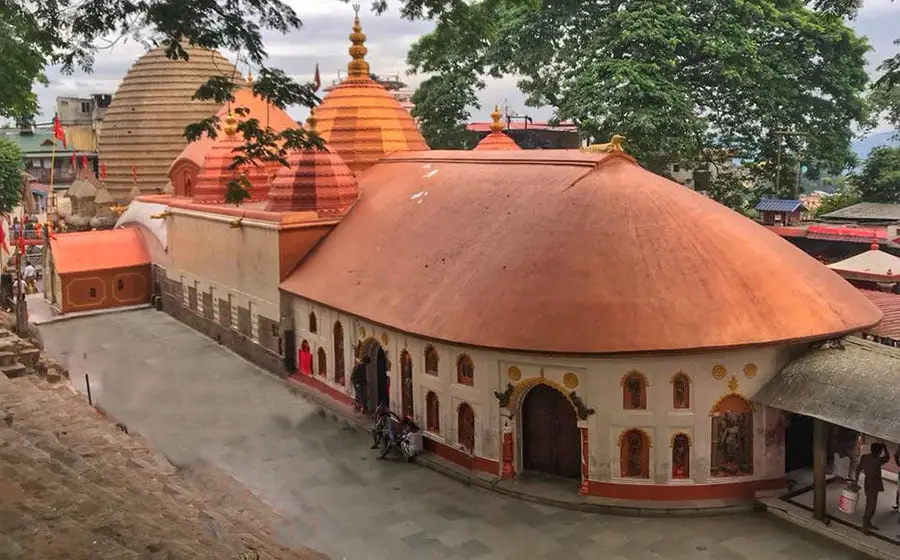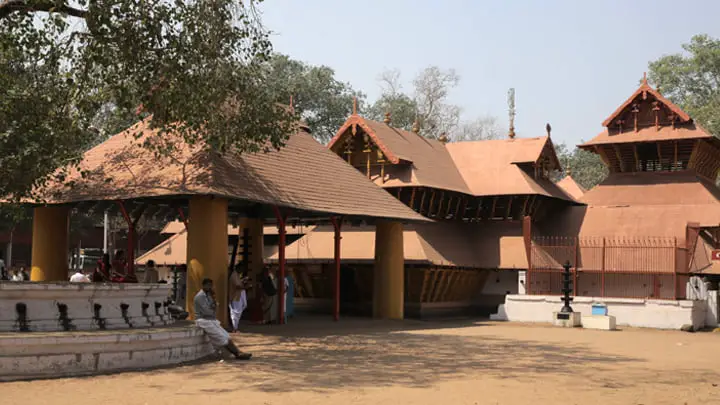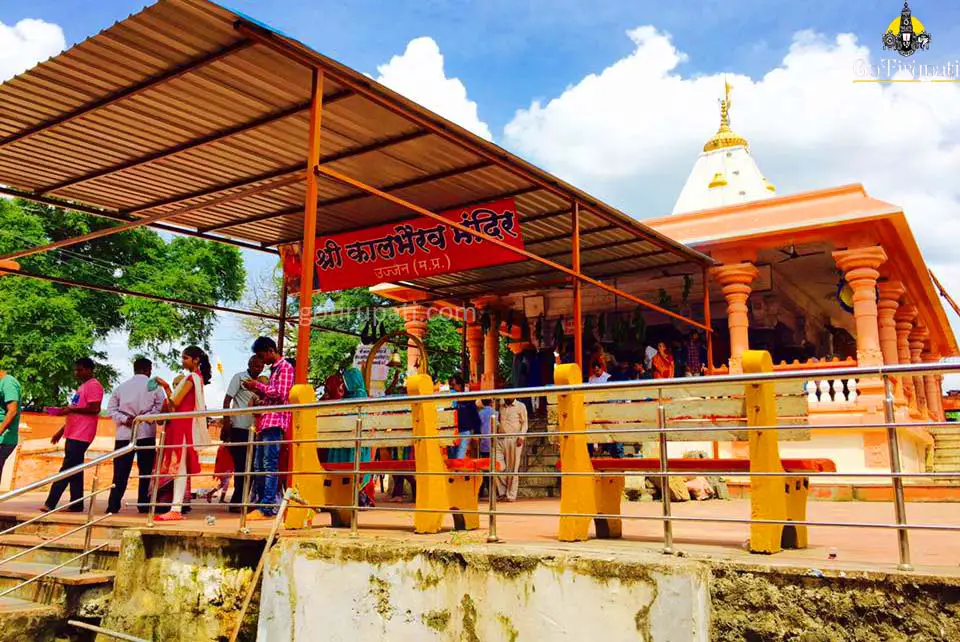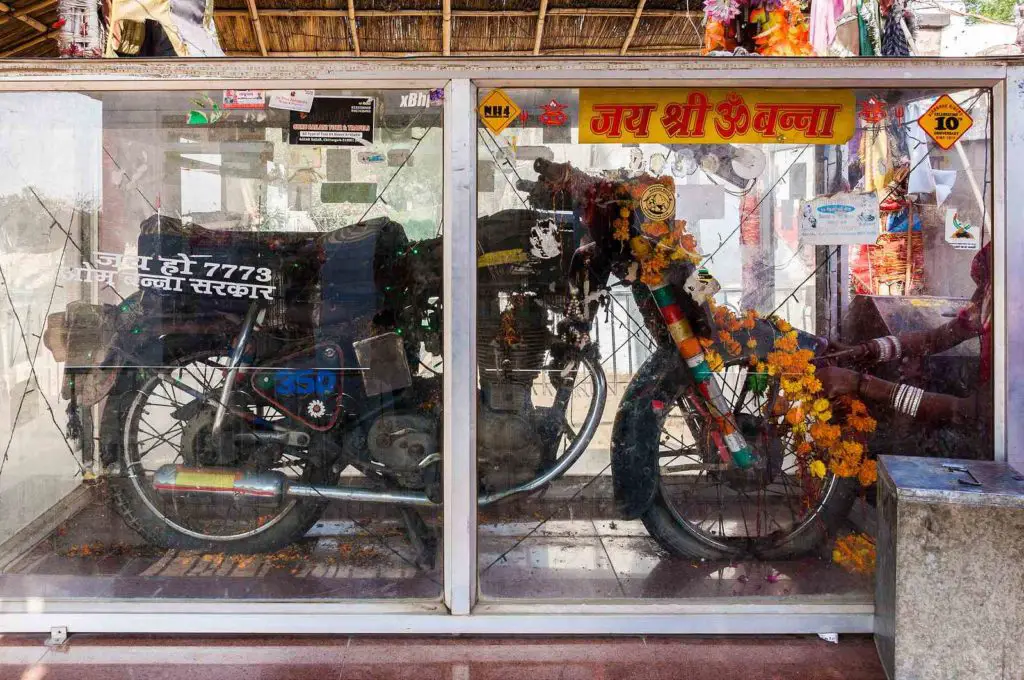Top 5 Temples Which Have Strange Stories and Beliefs

As per the 2001 census, India has more than 2 million Hindu temples. Not only different temples but also different Gods and Goddesses and their quirky factors and beliefs.
Here are from those 2 million temples, the top 15 temples which have strange stories and beliefs.
Top 5 Temples Which Have Strange Stories and Beliefs
1. Kamakhya Devi Temple, Assam: Dedicated to the Goddess on Menstruation

The Nilachal Hills in the western part of Guwahati city in Assam, India, has this temple as the main temple which further has three temples inside its premises out of the ten temples that are dedicated to Mahavidyas: Kali, Tara, Sodashi, Bhairavi, Bhuvaneshwari, Chhinnamasta, Dhumavati, Bagalamukhi, Matangi and Kamalatmika. Thus it is a part of a complex of temples.
Belief:
Kamakhya Temple denotes the spot where Sati used to secretly express her desires and love towards Shiva, and it was also the place where her genitalia fell after Shiva danced with her corpse.
Quirk factor:
Every year during monsoon, the Tantric fertility festival or Ambubachi Mela is celebrated here and it is when the goddess menstruates here. It is marked by the water in the main shrine running red and the temple being closed down for three days.
2. Kodungallur Bhagavathy Temple, Kerala: Abusing the goddess is good

The Kodungallur municipality in the South Western border of Thrissur district of Kerala, India, has this temple. It is dedicated to the goddess Bhadrakali/ Kodungallur Amma, which is a form of goddess Kali popular in South India. The temple is placed in the middle of 10 acres and is surrounded by peepal and banyan trees.
Belief:
One belief is that there is divinity present in what is called the “Rurujit Vidhaana” pattern, a form of installation with Shiva in one end, Ganesha in the other, with the Sapta Matrika goddess in between. Yet another belief is Kannaki, the heroine of Ilango Adigal’s Tamil story Silappathikaram came to Kodungallur, prayed to Bhadrakali of Kodungallur, and became absorbed in the murti.
Quirk factor:
From Bharani asterism in the month of Kumbham (February–March) to seven days after Bharani asterism in the month of Meenam (March–April), the Bharani festival is celebrated. And in a country like India where one’s faith can instill intolerance and kill lakhs of innocents the strange thing here is that the goddess, in this case, is abused instead.
At the very start, ‘Kozhikkallu
3. Chilkur Balaji Temple, Hyderabad: The Visa Balaji Temple

Located on the banks of Osman Sagar in Hyderabad is one of the oldest and beautiful temples in Hyderabad dedicated to Sri Balaji Venkateshwara. This temple has no donation box and accepts no donations in any form. This temple also doesn’t provide any special treatment to the VIPs. It is one of the only two temples in India to do so. It is again one of the only two temples in India to stay out of government control.
Belief:
It is believed that a devotee was there during the time of Akkanna and Madanna, the uncles of Bhakta Ramdas. He used to visit Tirupati every year but could not do so on one occasion owing to serious ill health. Lord Venkateshwara appeared in his dream and said, “I am right here in the nearby forest. You don’t have to worry.”
The devotee at once went to the place indicated by the Lord in his dream and dug up a molehill that was present there. But accidentally, while he was involved in digging, his axe struck Lord Balaji’s idol on the chest. Surprisingly blood started flowing profusely from the “wounds” and the ground was flooded and turned scarlet. Suddenly the devotee heard a voice from the air saying, “Flood the molehill with cow’s milk.” When the devotee did so, a self-manifested idol of Lord Balaji accompanied by Sridevi and Bhoodevi (a rare combination) was found, and this idol was installed with the due rites and a temple built for it.
Quirk factor:
As comic as it may be. But people say it is the temple where one should pray for getting a visa on his/her passport. A devotee who wants to get a visa has to go through the following process:
He should offer normal prayer rituals which
4. Kal Bhairavnath Temple, Ujjain: No more ‘no’ to booze

The Kal Bhairav temple is a Hindu temple located on the banks of the Shipra River, in the Ujjain city of Madhya Pradesh, India. Dedicated to Kal Bhairav, the guardian deity of the city. It is one of the most active temples in India, visited by hundreds per day. It is believed that the original temple was built by an obscure king named Bhadrasen.
Belief:
In the Saivite tradition, the worship of Ashta Bhairava (“eight Bhairavas”) is a part of
In the tradition, it goes like this Brahma became egoistic after a conversation with Vishnu over who created the world and started his comparisons with Shiva in everything. Not only that, Brahma started interfering in Shiva’s work. This angered Lord Shiva and thus a very furious Shiva threw a small nail from his finger, which assumed the form of Kala Bhairava. This nail casually went to cut the fifth head of Brahma. The cutting of the fifth head of Brahma symbolizes the destruction of Brahma’s ego.
Quirk factor:
Liquor is offered to the temple deity as one of the 5 ritual offerings known as
The deity here is different in that the priest offers the liquor from the devotees by pouring it into a saucer and then tilting it towards deity’s lips. Everyone claims that the lips don’t have any cavity and that the deity miraculously takes in the liquor offered to him. However, this offering through saucer is only done and possible by the temple priests. One-third of the liquor is returned to the devotee who offered it and as Prasad.
5. Om Banna Shrine, Rajasthan: Bullet Baba

It is a shrine located in Pali district and 50 kilometres away from Jodphur on the Pali-Jodhpur highway, near Chotila village Jodhpur, India, devoted to a deity in the form of a 50cc Bullet motorcycle.
Belief:
Those who pass by National Highway 65 stop to bow their heads and leave offerings in the honor of the Om Banna’s spirit and his bullet bike. It is believed that a person who does not stop to pray at the shrine is in for a dangerous journey. This is because the National Highway 65 where the temple is located is famous for accidents. Devotees come with incense sticks, small bottles of alcohol, coconut, flowers, sweets and red thread. They are also motivated by the temple priests to apply ’tilak’ mark and tie a red thread on the motorbike. Local people even sing folk songs in the name of Om Banna.
Quirk factor:
On 2 December 1991, Om Singh Rathore (famously known as Om Banna) died when he was travelling from the town of Bangdi near Sanderao of Pali to Chotila but suddenly lost control of his motorcycle and struck a tree. His motorcycle fell into a nearby ditch. The next morning, local police reported the incident and took the motorcycle into custody at a nearby police station. The next day it was reported to have vanished from the police station and was traced back at the site of the accident. Police again took it into custody but this time emptied its petrol tank and fixed it with chains and lock and key to avoid further tension. But the bike disappeared before dawn again and it kept on disappearing and being found at the accident site.



